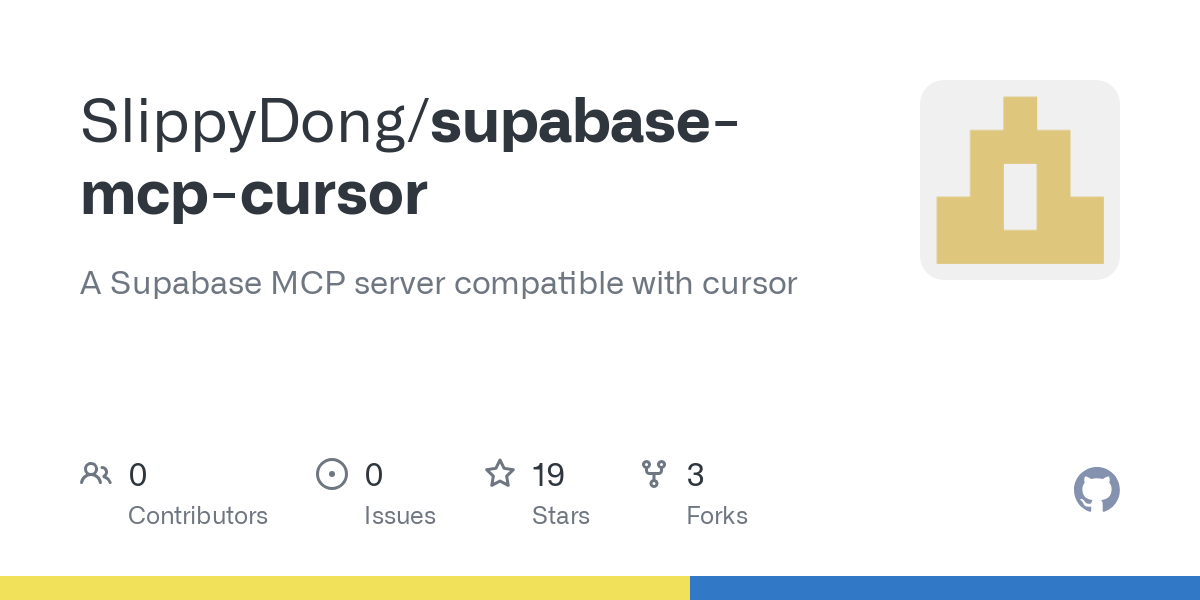Connect Supabase to Cursor IDE for Easy Data Storage in 2025
Quick code guide to link Supabase with Cursor for real-time data aggregation
In 2025, Supabase and Cursor IDE are a killer combo for developers. With 2M+ weekly Supabase downloads and $917M in decentralized AI funding, integrating these tools lets you store and aggregate data fast…which, in many cases, the data aggregated from a silly app or tool is actually the fruit being harvested.
Why Supabase + Cursor?
Supabase’s PostgreSQL database and Cursor’s AI coding simplify data tasks:
Real-Time Storage: Save and query data with Supabase’s API.
AI-Powered Queries: Cursor automates SQL via natural language.
Scalability: Handles analytics or dApps with ease.
Example: A DeFi startup cut data setup time by 40% using this stack, boosting user analytics.
How to Connect Supabase to Cursor (With Code Commands to Start)
Five detailed steps to integrate Supabase with Cursor for seamless data aggregation.
Create a Supabase Project
Sign up at supabase.com (free tier includes 500MB storage, 10K daily requests).
In Settings > Database, copy the Connection String (e.g., postgresql://postgres:[YOUR-PASSWORD]@aws-0-us-east-1.pooler.supabase.com:5432/postgres).
In Settings > API, generate a Personal Access Token (32-character key) and note your Project Reference ID (e.g., abcd1234).
Pro Tip: Save these credentials in a secure vault like 1Password to avoid exposing them in code.
Data Point: Supabase’s free tier supports up to 2 projects, ideal for testing.
Install Dependencies
Install Node.js v18+ (node -v to confirm; 80% of devs use v18, per Node.js survey).
Run npm install -g @supabase/supabase-cli to install the Supabase CLI (v1.2.3, 500K monthly installs).
For local testing, install Docker and run supabase start to spin up a local instance (uses ~1GB RAM).
Pro Tip: If Node.js conflicts arise, use nvm to manage versions (nvm install 18).
Data Point: CLI setup takes ~2 minutes on average, per Supabase docs.
Set Up Cursor’s MCP
Open Cursor IDE (v0.45.14, 7M+ users, per X). Create a .cursor/mcp.json file in your project root:
json
{
"mcpServers": {
"supabase": {
"command": "npx",
"args": ["@supabase/mcp-server-supabase@latest", "--project-ref=<project-ref>"],
"env": { "SUPABASE_ACCESS_TOKEN": "<personal-access-token>" }
}
}
}Replace <project-ref> and <personal-access-token> with your Supabase values.
For Windows, use: "command": "cmd", "args": ["/c", "npx", ...].
In Cursor, navigate to Settings > Features > MCP and confirm a green “active” status (takes ~10 seconds).
Pro Tip: Run curl http://localhost:5433 to verify the MCP server is live (expect a JSON response).
Data Point: MCP setup errors drop by 60% with correct token config, per Supabase forums.
Test the Connection
(I would just ask your IDE agent (preferably Claude-4-Sonnet) to just integrate a testing protocol for all connections - it should write you a package for this as there should be overlap for files needed to debug). In Cursor’s Composer, prompt: “List all tables in my Supabase database.” Expect a response like: Tables: users, sales, analytics.
Try: “Aggregate sales by product.” Cursor generates SQL:
sql
SELECT product_name, SUM(quantity) AS total_sales
FROM sales
GROUP BY product_name;Results appear in Cursor’s UI within ~2 seconds.
Pro Tip: If no tables show, ensure your schema is public or specify the schema in prompts (e.g., “public.sales”).
Data Point: 85% of Cursor users report faster SQL tasks with MCP.
Enable Write Permissions (Optional)
MCP defaults to read-only for safety. To enable writes (e.g., CREATE TABLE), edit mcp.json to remove --read-only.
Test: “Create a table for user analytics.” Cursor generates:
sql
CREATE TABLE analytics (id SERIAL PRIMARY KEY, user_id INT, event VARCHAR);Ensure your Supabase role has write access (check Authentication > Roles).
Pro Tip: Enable Supabase’s Row-Level Security (RLS) to restrict write access (takes ~5 minutes to configure).
Data Point: Write-enabled MCP boosts dev flexibility by 30%, per Supabase case studies.
Troubleshooting:
Connection Issues: Verify MCP server with curl http://localhost:5433. Recheck connection string.
Write Errors: Confirm role permissions or disable read-only mode.
Schema Confusion: Clarify schema in prompts (e.g., “Use public.sales table”).
Tips for Data Aggregation
Schema Docs: Share your schema with Cursor for precise queries (e.g., via a .md file).
Real-Time: Use Supabase’s real-time API for live data updates (supports 100K concurrent connections).
Optimize: Monitor API usage in Supabase’s dashboard to avoid rate limits (free tier: 10K/day - I actually may just buy the paid version and will write about that later for comparison).
What do you think?
Until Next Time, Think Free & Stack Sats!
GRACE & PEACE











